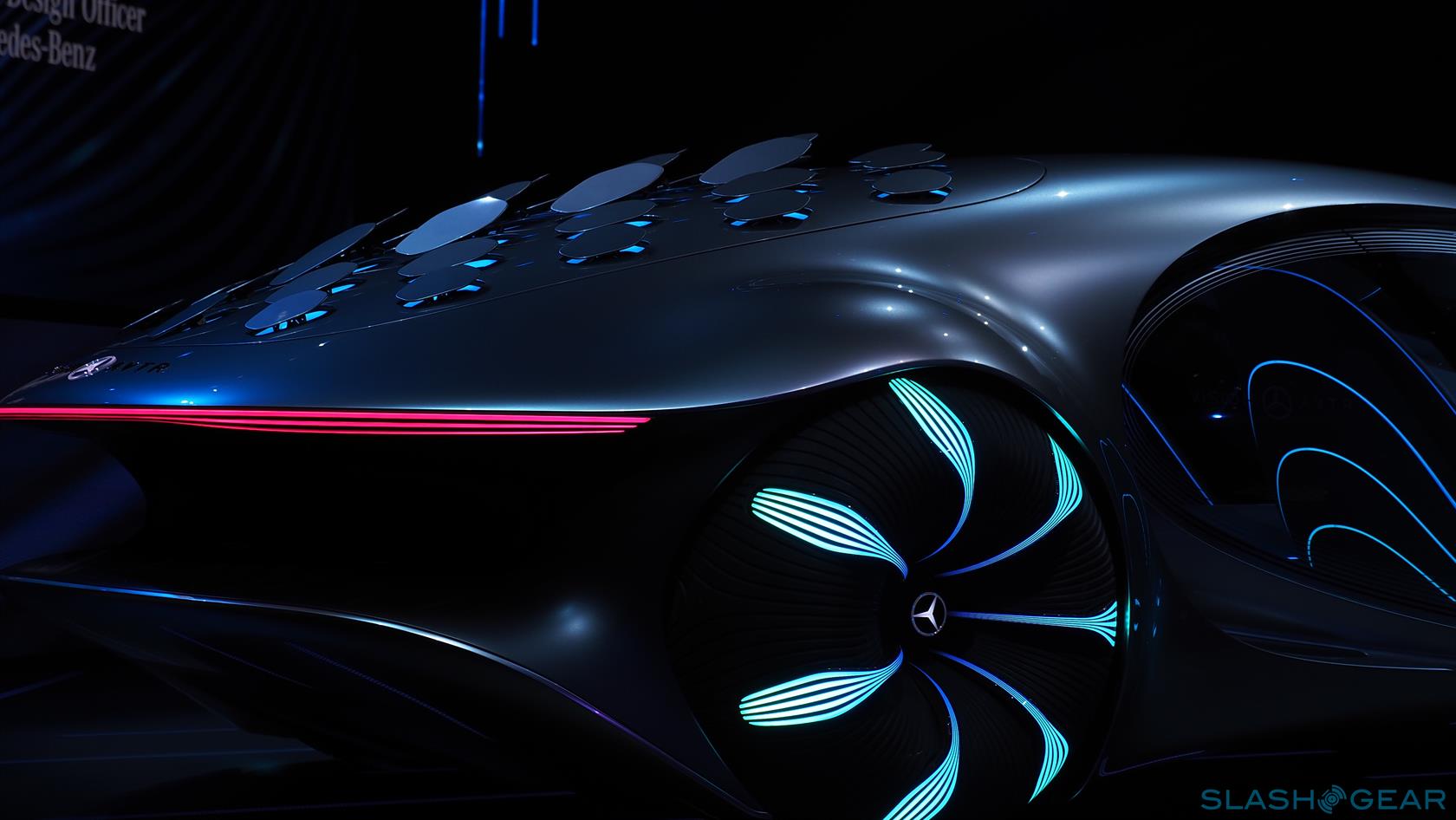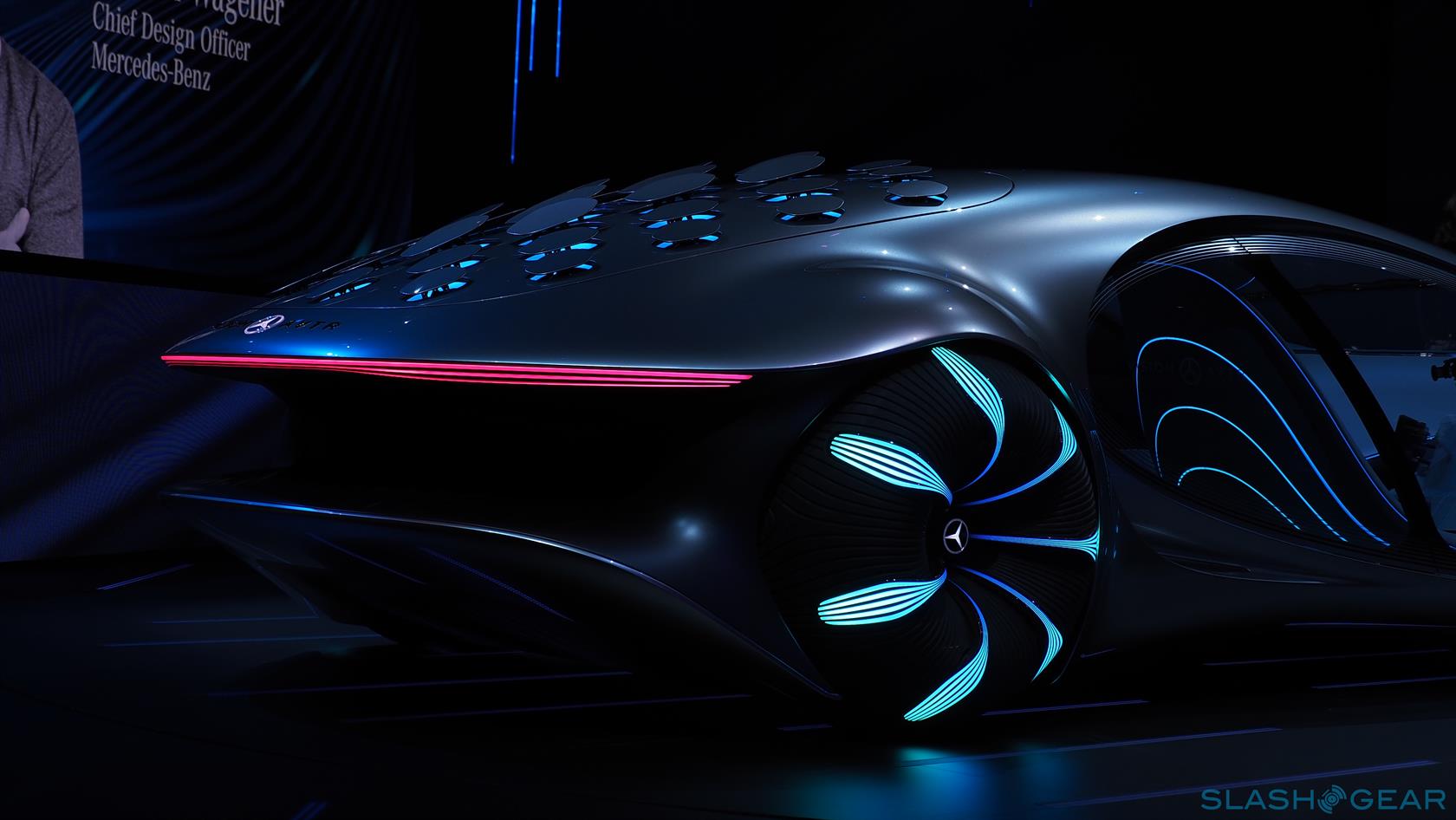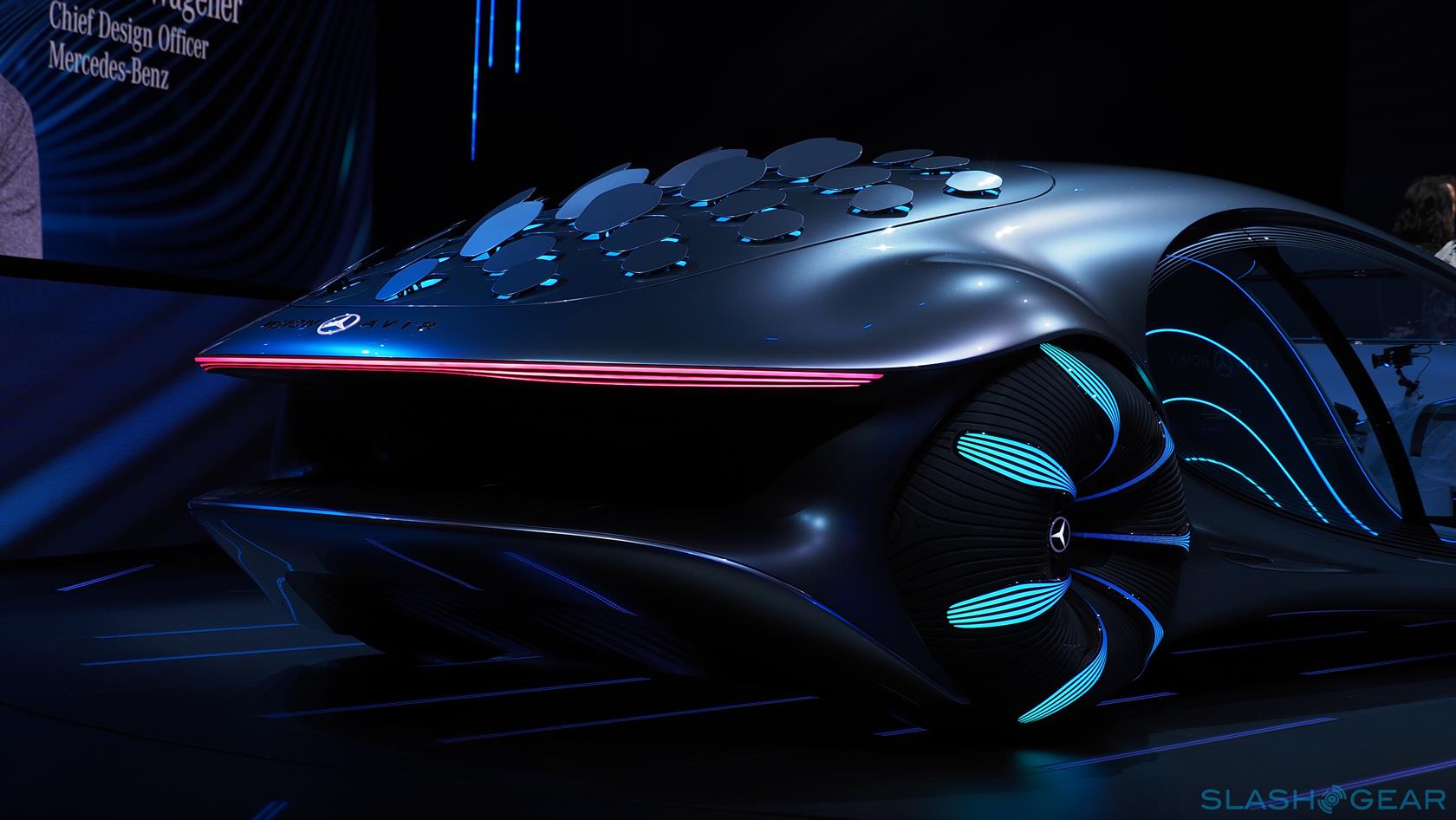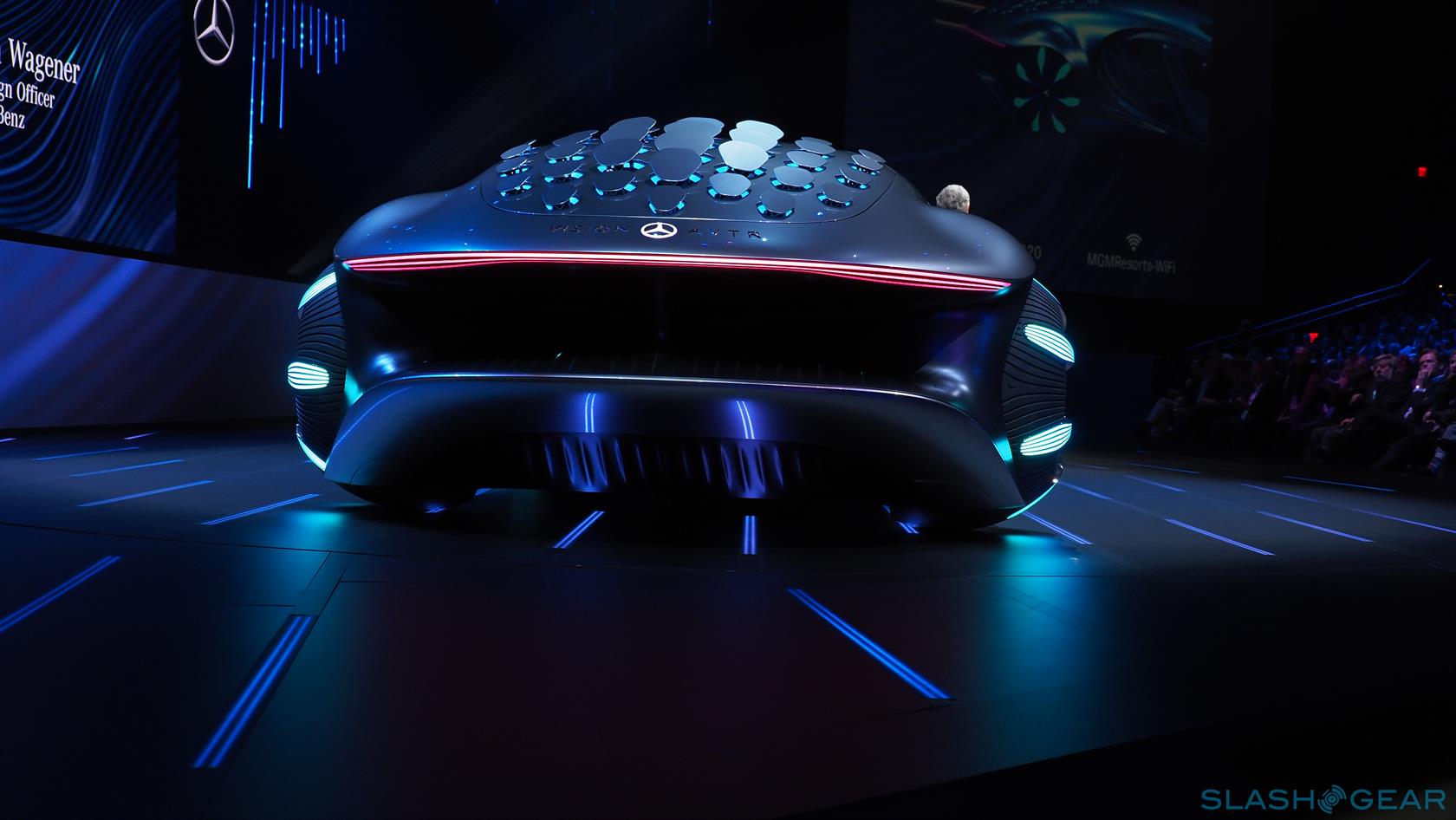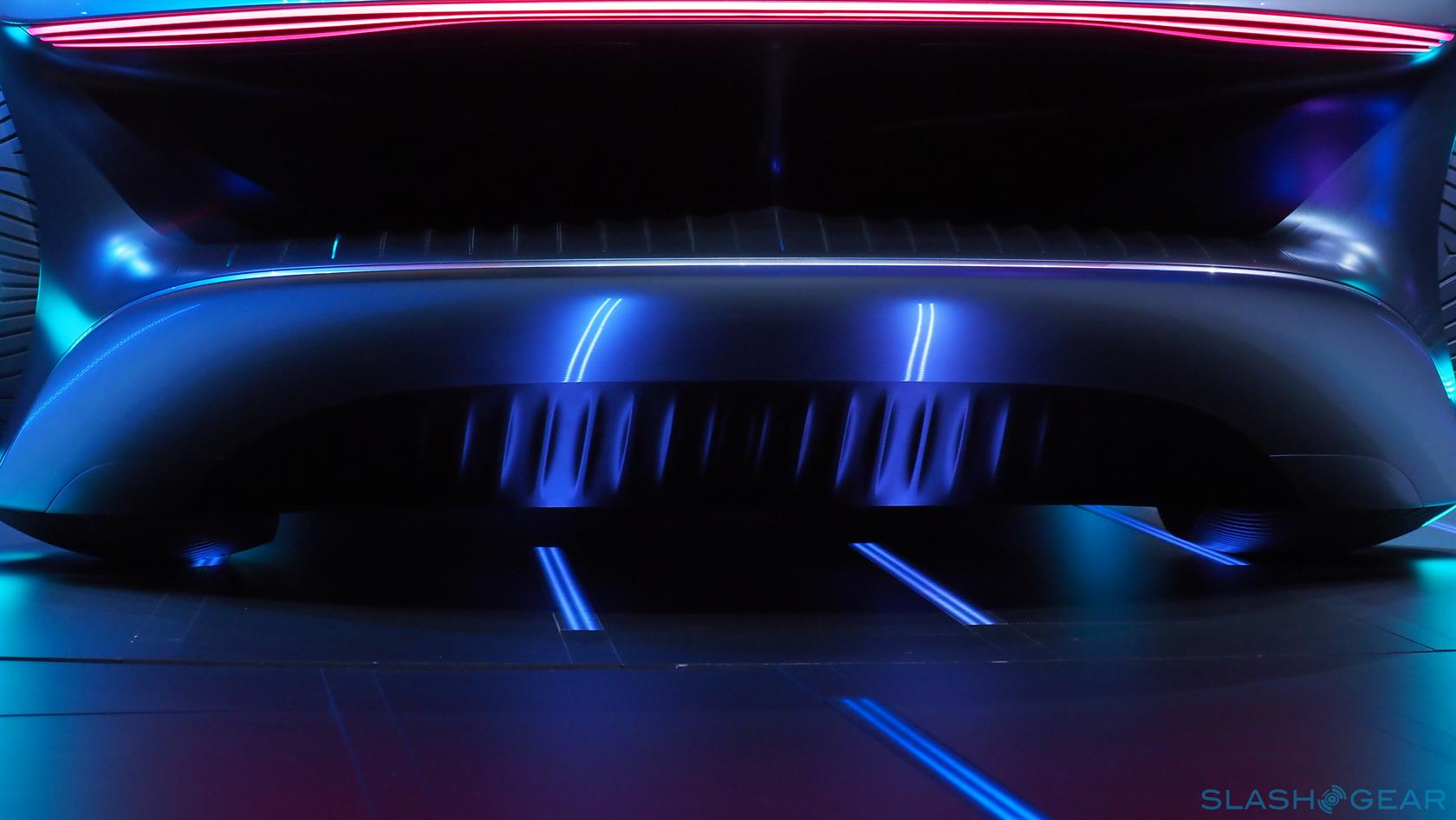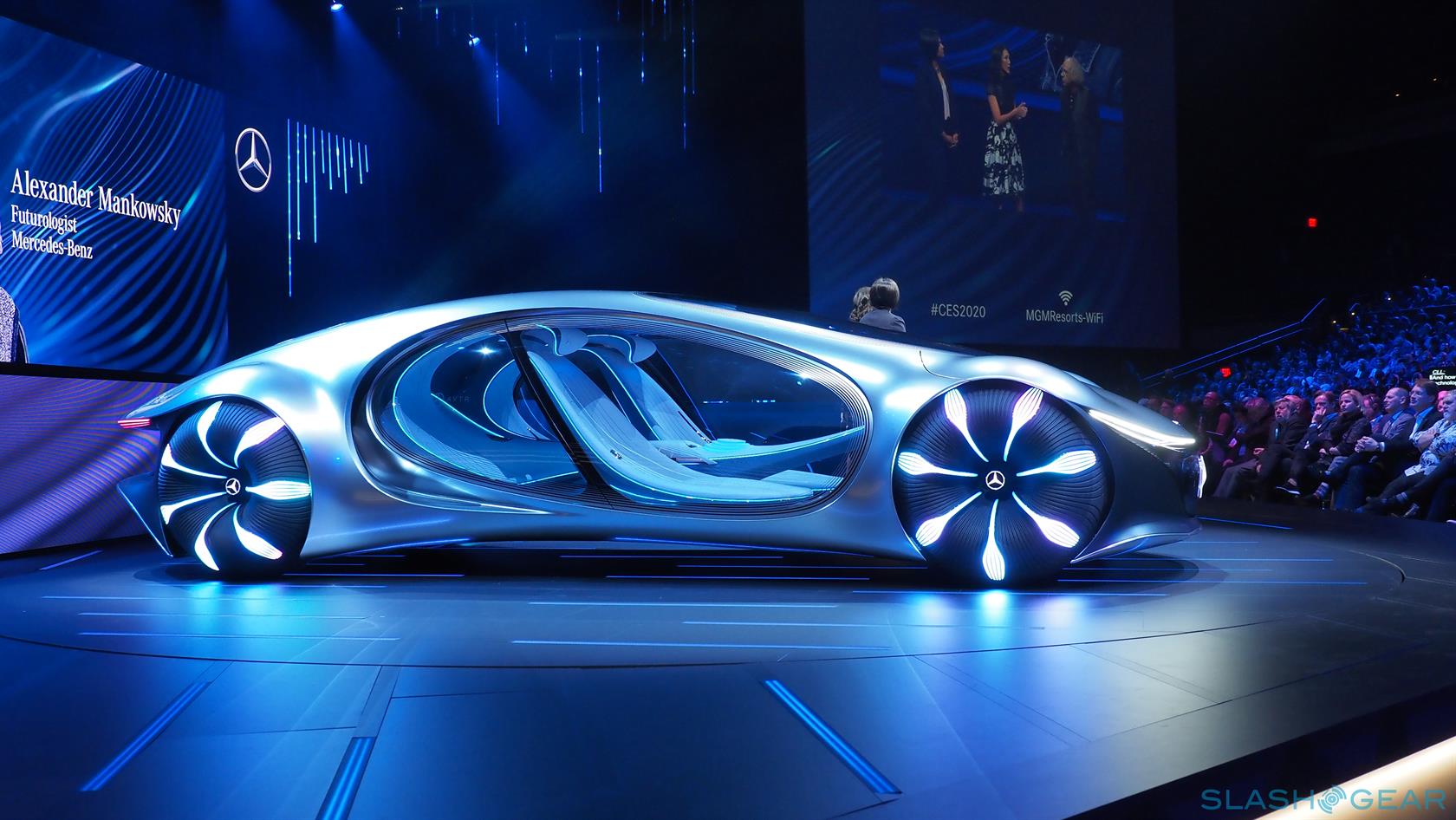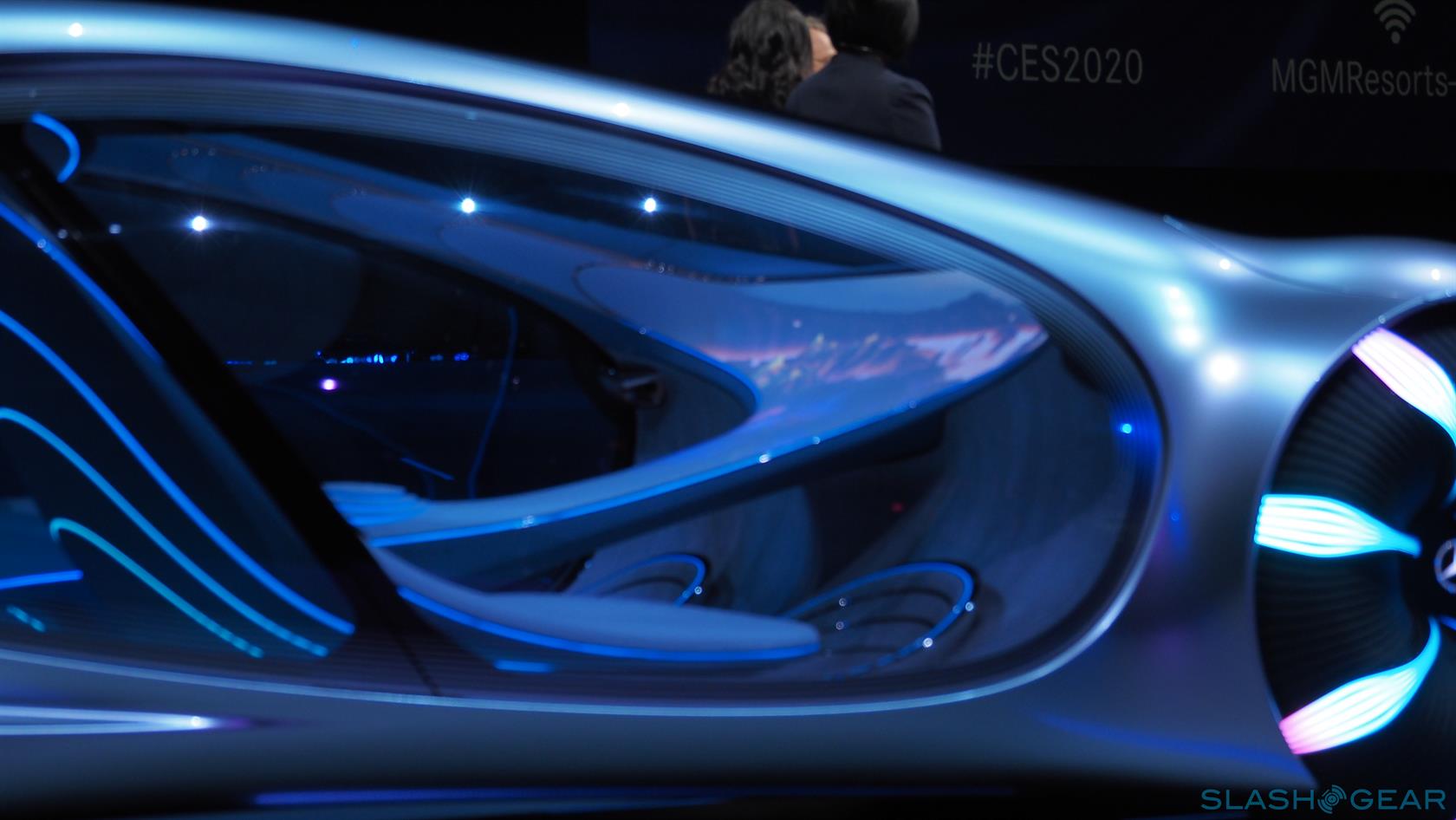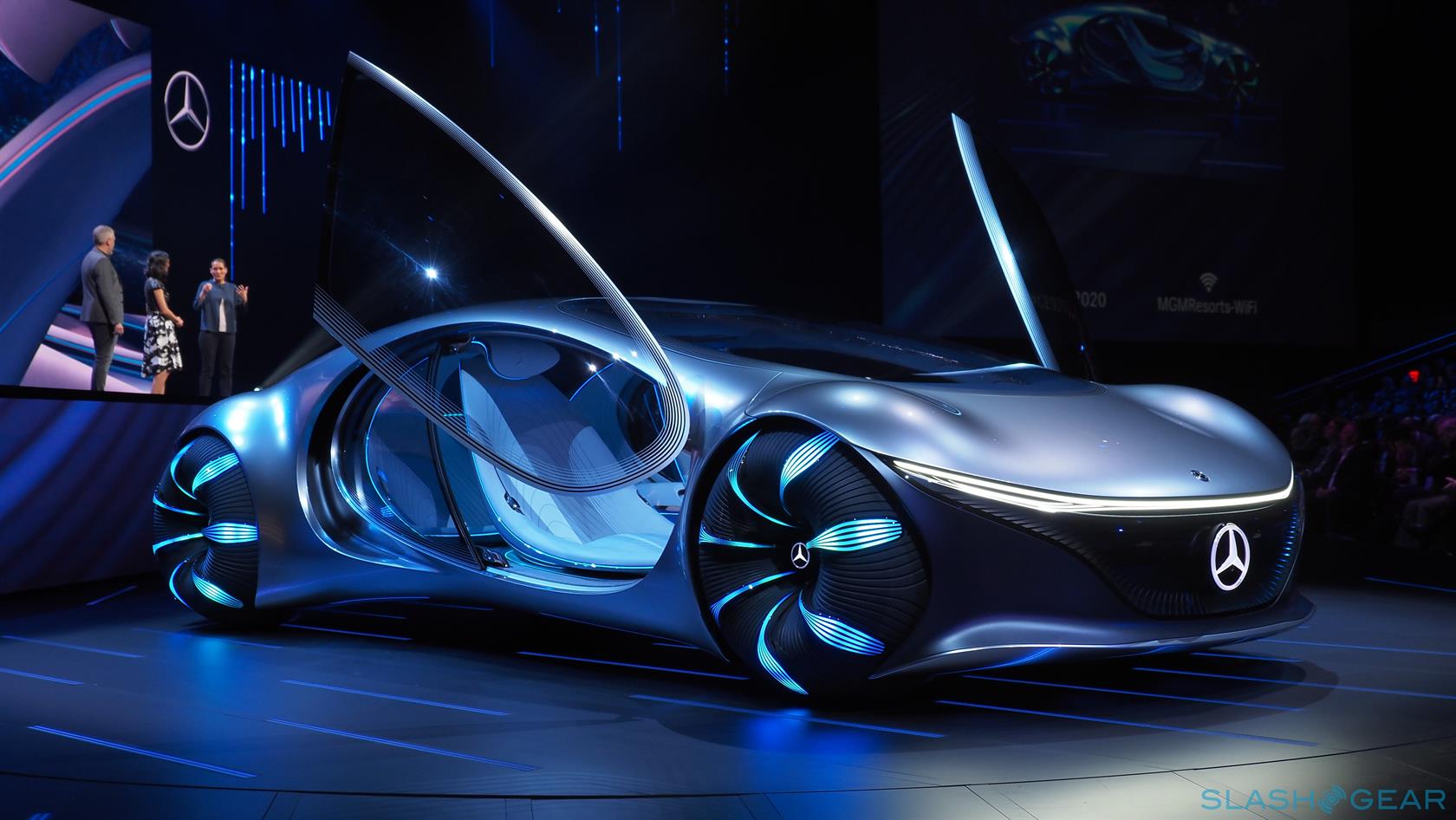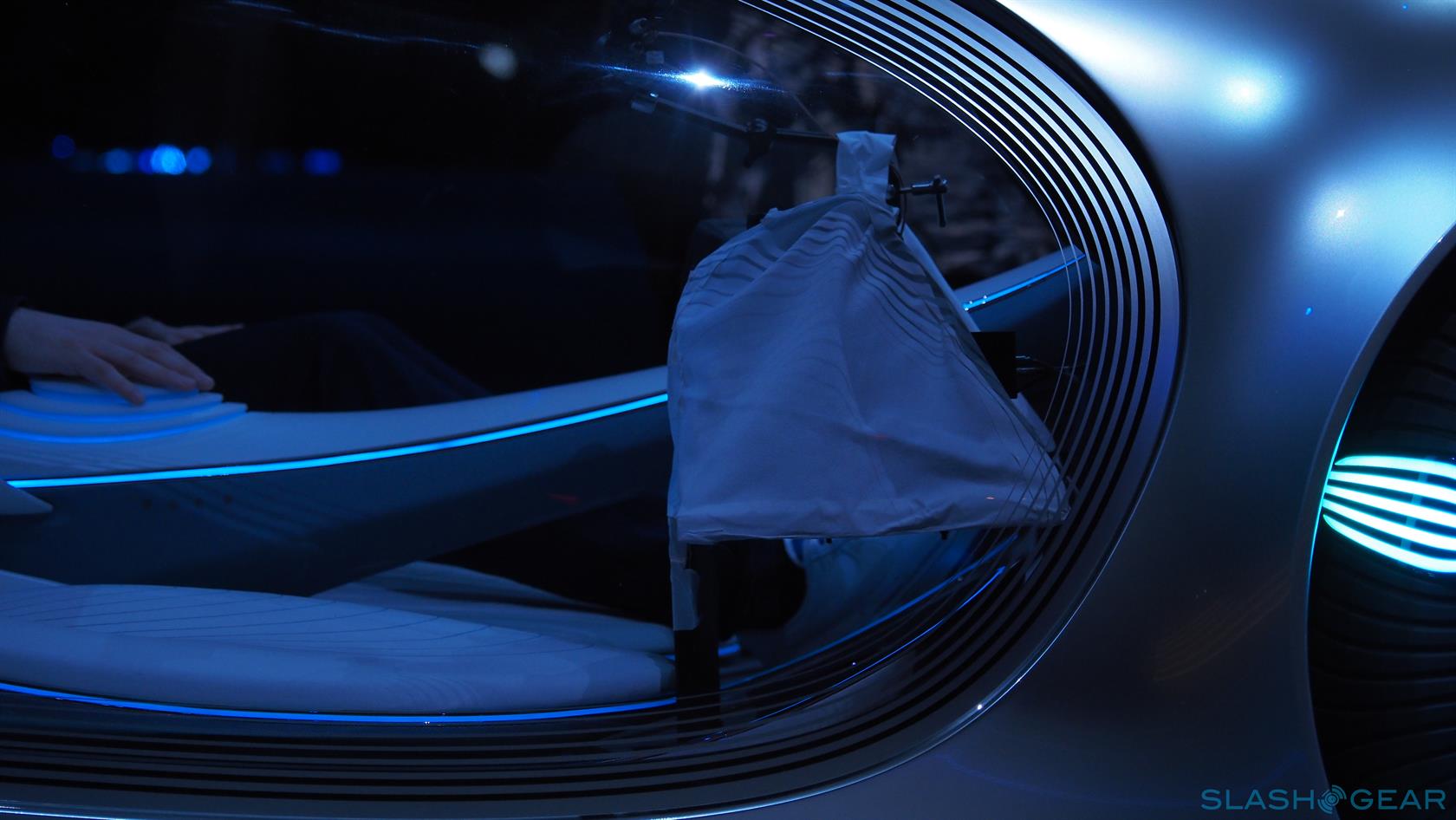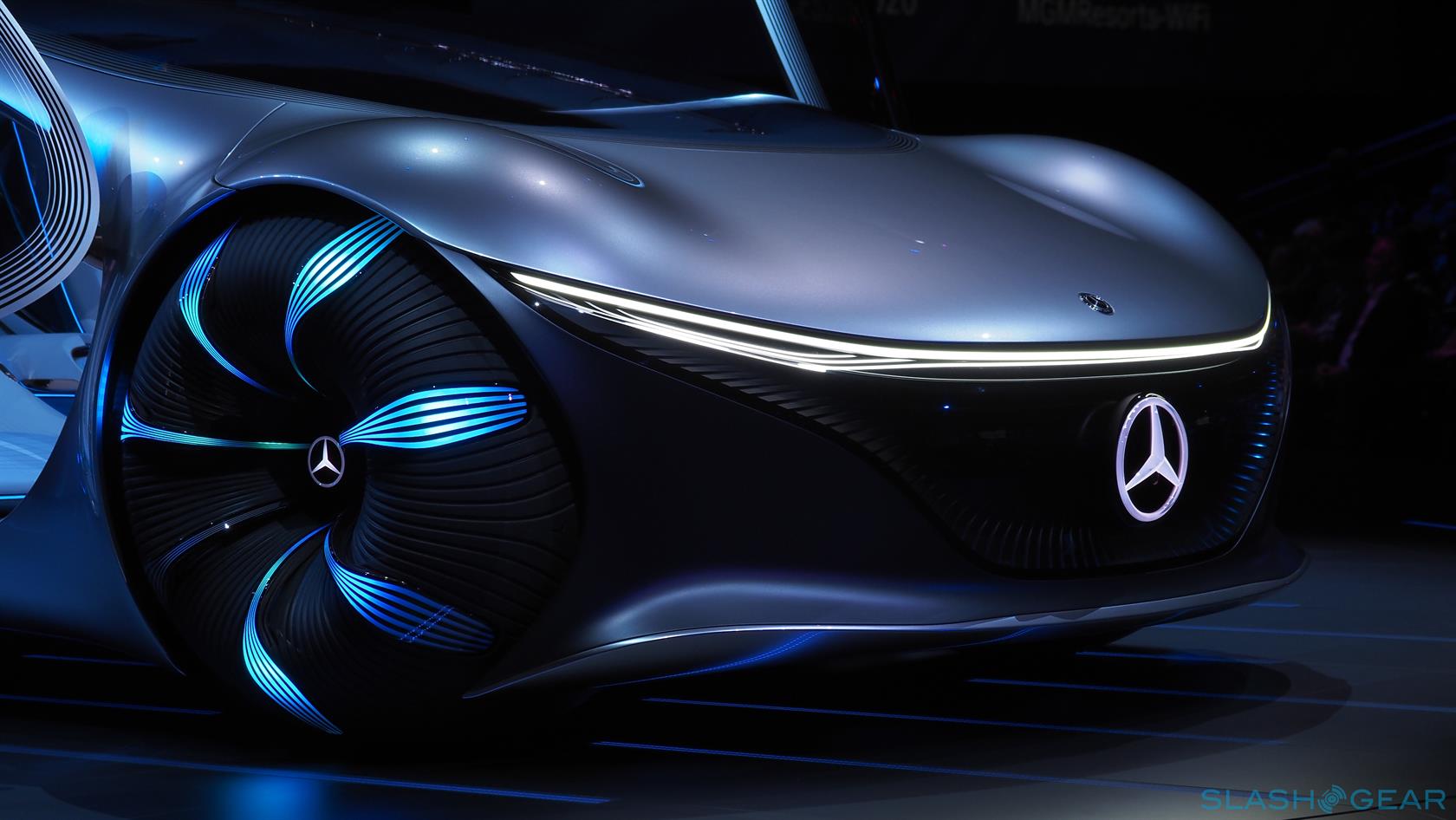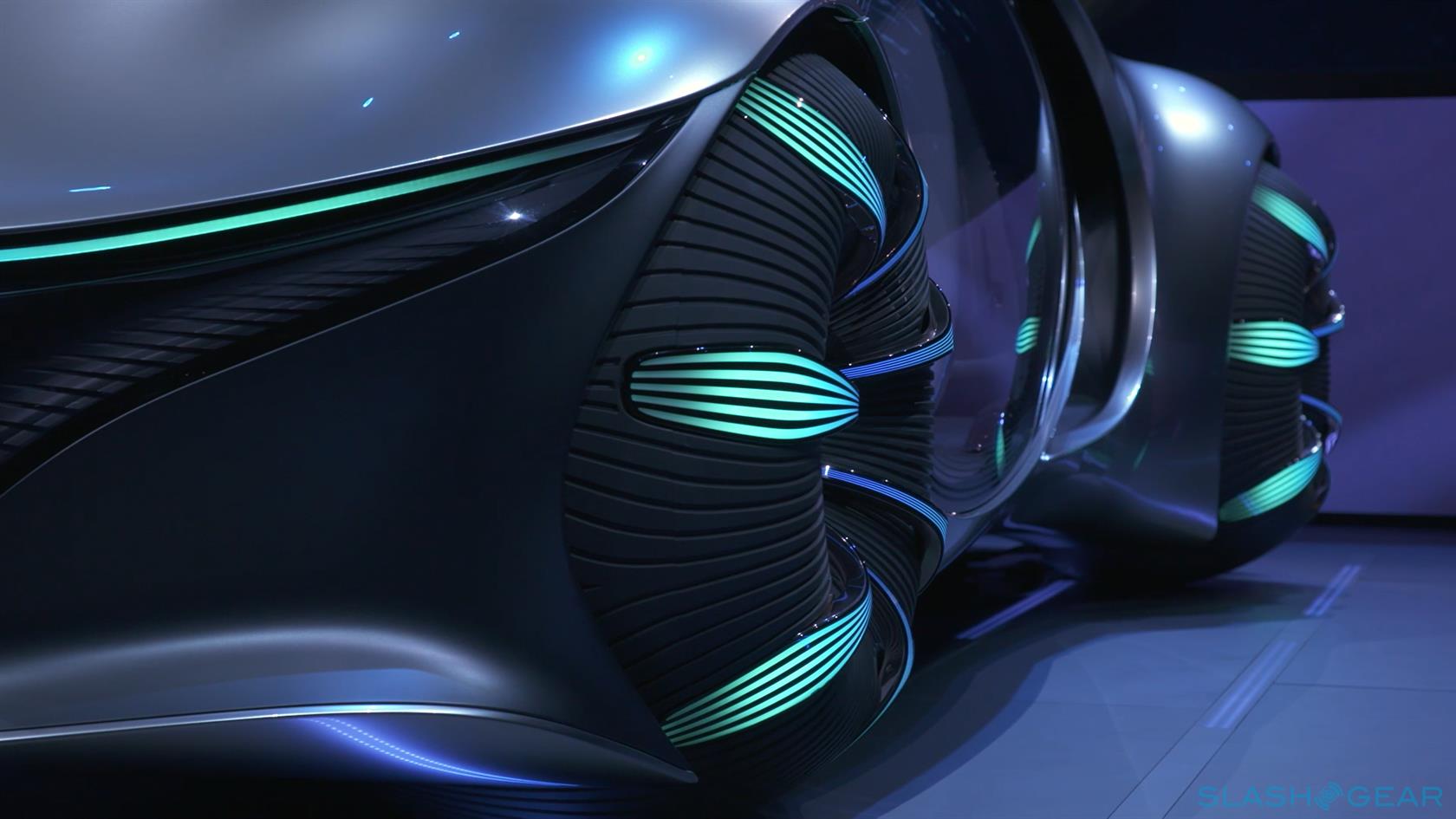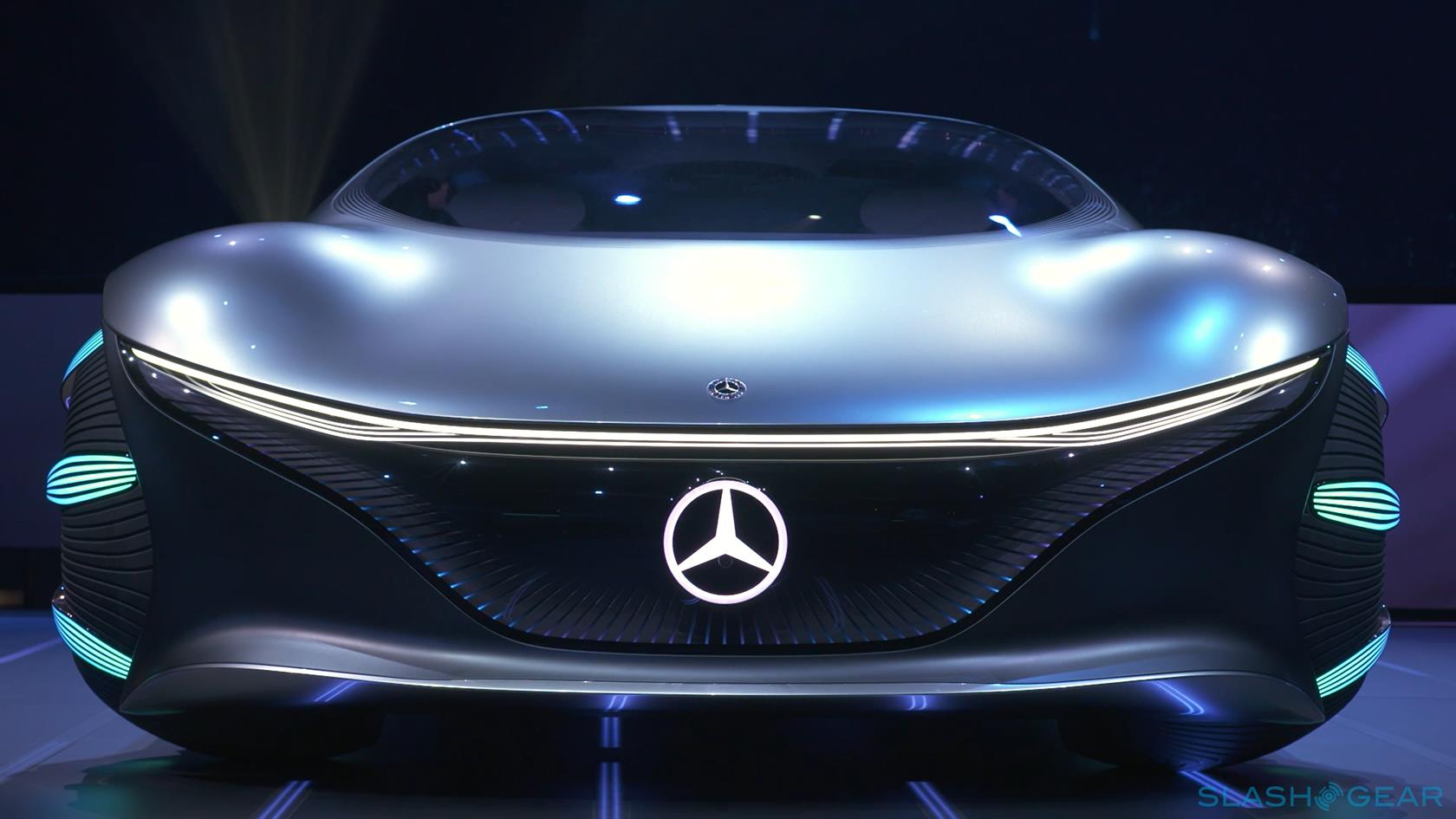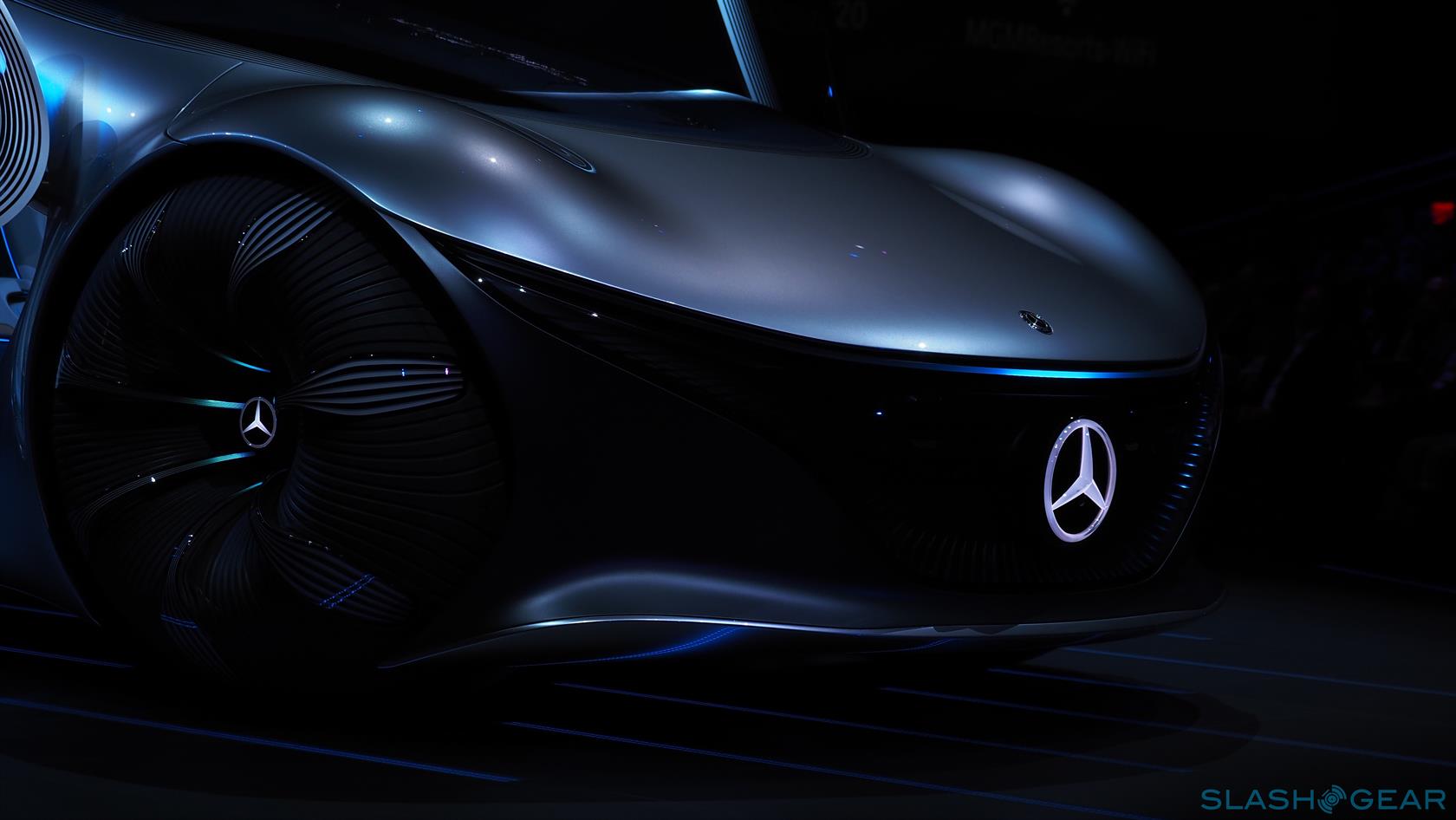The Mercedes-Benz VISION AVTR is more than just an Avatar-inspired concept
In many ways, Mercedes-Benz's new VISION AVTR concept car is everything we've come to expect from automakers at CES 2020: exaggerated style wrapped in an ambitious message, in this particular case James Cameron's epic "Avatar" movie. Certainly, the VISION AVTR – which stands for Advanced Vehicle Transformation – is full of gloriously hi-tech details that Mercedes says embody the next chapter of sustainable luxury. Think ecologically-sound mobility mixed with awe-inspiring, futuristic design that tries to highlight the interaction between humans and machines. It's a tall order, but then again the VISION AVTR is a big car.
It was inspired by James Cameron's Avatar, a sci-fi movie set in the mid-22nd century and which, above all, focused on the importance of sustainability in the modern world. It's unlike anything in Mercedes' current line-up of vehicles, though that's entirely by design. The automaker says that it was the symbiotic relationships in Cameron's film that inspired the unusual aesthetic, complete with shape-shifting bodywork.
"The world of Avatar is a cosmos full of new shapes and colors, and such inspirations are inherently inspiring for designers," Gorden Wagener, Chief Design Officer of the Daimler Group, explains. "Just think of all the extraordinary environments, life forms, and also the culture of the indigenous Na'vi inhabitants in the world of Pandora; everything is closely related to our design philosophy and the bipolarity of our brands of intelligence and emotion."
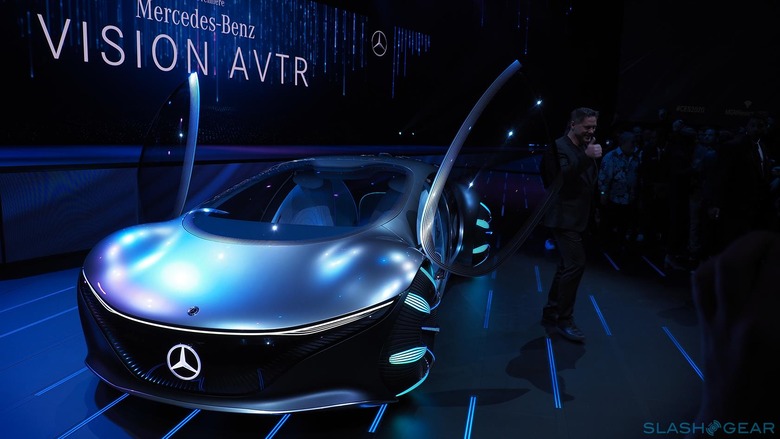
While the VISION AVTR itself is based on the original movie, though, the concept vehicle won't actually be seen in the upcoming pair of Avatar flicks. "We're doing it the other way around," jokes Jon Landau, Avatar's Producer. "To me, the car is not a product placement because it won't be featured in the Avatar movies. But it's a product placement in the sense that Avatar is in the car, it goes the other way."
The goal was a vehicle that seamlessly interacts with its occupants. Equipped with an advanced AI, the VISION AVTR comes to life by sensing the heartbeat and breathing patterns of the driver and passengers. When I placed my hand on the glowing center console, the concept came to life. The seats, too, are tied into the life-forces of the person sitting in them: they feature haptic feedback, recording vital data by measuring the driver's breathing patterns.
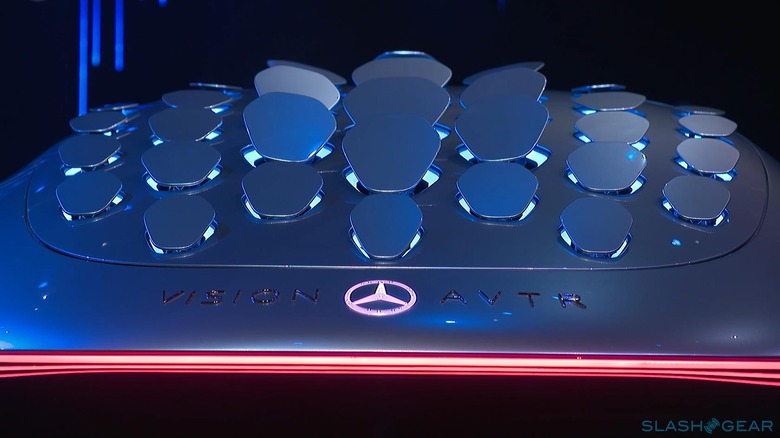
The VISION AVTR still looks like a car, but it aims to replicate the aura of a living, breathing creature. For instance, there are 33 multi-directionally movable "surface elements" or flaps as Mercedes describes them, spread across the rear hood. Reminiscent of a reptile's scales, they flutter and undulate to add gestural communication; Mercedes also envisages them as helping to add energy to the EV in the form of solar panels, instinctively angling towards the sun like flowers as the vehicle moves. Finally, the flaps can be utilized to enhance aerodynamic efficiency, increasing driving dynamics and improving braking.
The transparent doors open gracefully upwards to mimic the gestures of a flying insect and its rider. Together with those interactive and movable flaps, the car seems eager to interact, much in the same way a doggie gleefully wags its tail in the presence of its master.
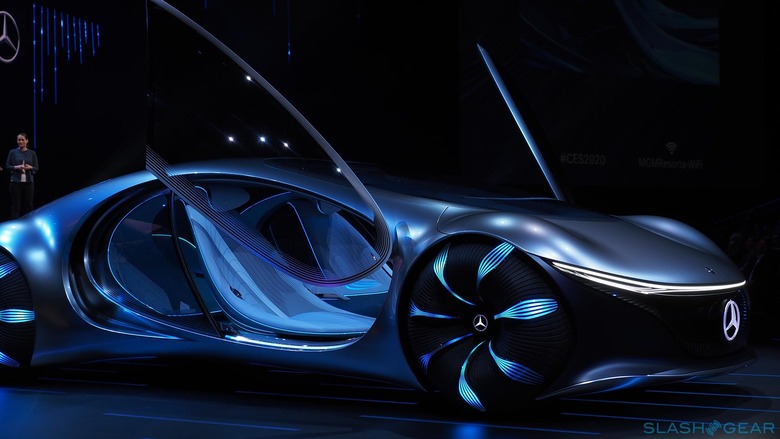
"There's another area of technology where the car has made great progress and still has amazing potential: connectivity," Ola Kallenius, Chairman of the Board of Management at Daimler AG and Mercedes-Benz AG, says. In his CES 2020 keynote, Kallenius highlighted that vehicles of the future should do so much more than simply pair with our smartphones.
"What I want to focus on is the bond between human and machine. The more natural the connection gets, the better," Kallenius added. "I don't know how many people have a nickname for their smartphone, but we all know that many cars are treated like friends or family." This philosophy is the guiding principle in creating the advanced human-machine interface of the VISION AVTR. Because in the future, cars are not just separate machines; you or the driver will become one with the car.
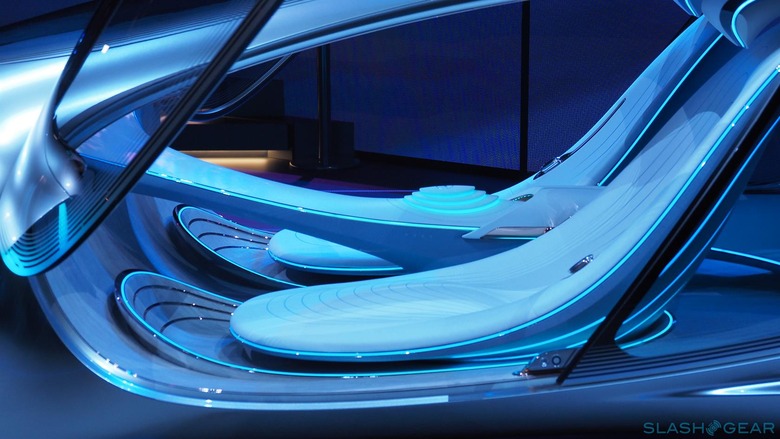
Similar to other concepts, it's the level of detail and ambitious features that most wow. Even if the idea of a harmonious fusioin between man, machine, and nature don't resonate, Mercedes' VISION AVTR is making waves in electric drive technology. The vehicle has four high-performance electric motors, with each motor built within its respective wheel. Producing close to 350 kW or approximately 470 horsepower, you have more than enough power to cruise quietly in the next interstellar world.
With a fully-variable torque vectoring system, each wheel can be driven separately depending on any given driving situation. And, since the front and rear axles are fully independent and can turn in opposite directions, the VISION AVTR can move sideways by around 30-degrees, which Mercedes describes as a "crab movement." That could be particularly useful for added agility and maneuverability through congested galactic cities (or just crowded parking lots in today's cities).
The wheels and tires, in particular, are extra special and were inspired by the woodsprites, which are seeds of the Tree of Souls from the "Avatar" movie. More than just providing traction and grip, those spherically-shaped tires are engineered to move smoothly and softly over the ground, akin to how dogs and other four-legged creatures utilize paws to move silently when hunting for prey.
"Conventional tires cause damage to the ground, and we wanted something that is more like an animal paw," explained Landau. "We even discussed the possibility of how the tires can pick up seeds via the grooves so when the car gets rolling over fertile soil, the tires can pick up the seeds and plant it in the soil." This may all sound ridiculous, but I understand the producer of Avatar's point of view when working with a movie-inspired concept car. "It was a dream come true working with creative design teams from a sci-fi fantasy movie, every car designer dreams of that," further added Wagener. "I truly believe this is the most revolutionary concept we ever did."
That revolution is more than just skin-deep. The entire vehicle is crafted from 100-percent recyclable materials with zero carbon footprint. Those four electric motors, for example, are powered by a new-age graphene-based organic battery pack, one which is totally independent of toxic rare earth elements, metals, and other minerals. With this type of battery, electric cars also become independent of fossil resources, while also alleviating a huge end-of-life concern facing traditional batteries in electric vehicles.
But more than just being eco-friendly, graphene batteries are capable of storing a higher energy density: up to 1200 Wh/liter, in fact, which is more than double that of an ordinary lithium-ion battery pack. Mercedes says its battery pack has automated wireless conductive charging, capable of ultra-fast recharging capabilities in less than 15 minutes. In the VISION AVATR concept, the battery capacity is rated at 110 kWh for an all-electric range of 435 miles (700 kilometers), which is also made possible by a high level of energy recuperation when moving or braking. As an added bonus, the batteries can give back power to the city with the concept's vehicle-to-grid feature.
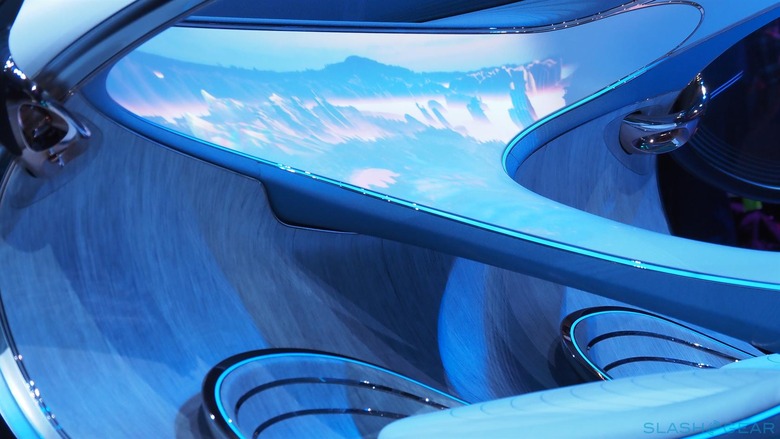
Though it may be the most revolutionary concept from Mercedes-Benz, the VISION AVTR also ties into the design language of the EQ product lineup, the automaker's electric car brand. The holistic interior design encapsulates the driver and passengers to deliver an immersive riding experience, with seats wrapped in Mercedes' vegan-based DINAMICA leather. While it feels like regular hide, it's actually a more sustainable form of microfiber derived from old clothing and PET plastic bottles. Oh, and did I fail to mention DINAMICA is the first and only microfiber material in the world that guarantees environmental sustainability during the entire production cycle? The material is both soft and slip-resistance to deliver enhanced comfort. Meanwhile, the floor is festooned in Indonesian Karuun (or rattan) wood, a fast-growing and ecologically stable type of rattan that is harvested by hand by local farmers.
They're the more practical features; some of the other design flourishes are a little more Hollywood. Mercedes' UX promises a tight biometric connection between the car, its driver, and the passengers. Hover your hand above the center console and you bring the vehicle to life; lift your hand, and the car projects a menu of different controls in your palm. Keen-eyed readers will notice the lack of a conventional steering wheel, which is unsurprising given the VISION AVTR is autonomous. Instead, the multifunctional control element in the center console allows the driver to operate the car with a few hand swipes, but Mercedes claims the control unit can be lifted completely if the driver wishes to assume full control of the vehicle. Replacing the dashboard is a curved display module projecting 3D graphics along with real-time images of the environment ahead.
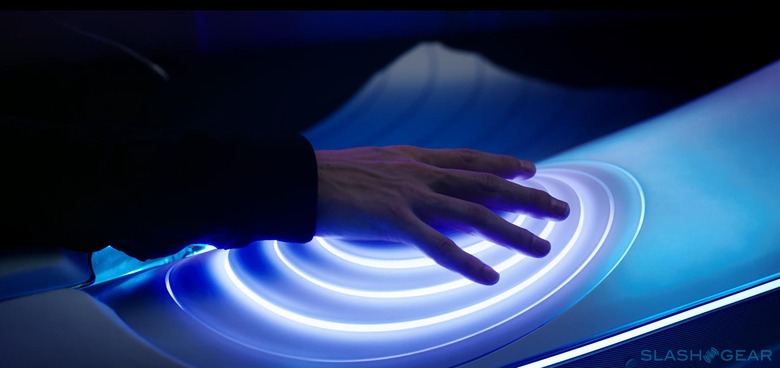
The screen could also allow the var's occupants to become aware of various energy forces that are not readily visible to the naked eye, things like ultraviolet light, magnetic fields, and bioenergy waves. The actual functionality dips heavily into the lore of "Avatar" the movie, and particularly the idea of family and collective groups. If, for example, the car spots that a family is onboard, it will automatically begin showing displays for the parents in the front seats, so they can monitor what the kids are doing in the rear. The parents' pulse is replicated by lighting patterns on the rear of their seats, which Mercedes says should give rear occupants "a sense of connectedness and security." Then there's the "Magic Pool," which is the VISION AVTR's version of rear-seat displays. It includes games and augmented reality experiences focused on entertaining and educating younger passengers.
All of this reminded me of Mercedes' very own F-015 concept from 2017. With revolving front and rear seats, the vehicle allows all the occupants to interact face-to-face while remaining virtually connected to the car itself. This got me thinking: If Mercedes is really aiming to convey a sense of connectedness and security, why not give the VISION AVTR a similar interior layout as in the F 015 Concept?
"We showed that concept a couple of years ago, and it's not really an innovative idea, to begin with," Wegener counters. "In the VISION AVTR concept, we want to take it on a different level of communication. In this vehicle, the connection is with the vehicle and with the outside world while still creating an interactive family experience," added Landau.
Is any of this headed to production? Probably not, at least not anywhere close to the form we see here at CES. Certainly, we can expect more use of recycled materials and ecologically-sound trim, and Mercedes-Benz is one of a number of automakers exploring graphene-based battery technology.
At the same time, Mercedes has its Ambition 2039 project. Announced back in May 2019, that set the goal of a carbon-neutral new passenger car fleet in 20 years, while simultaneously targeting plug-in hybrids or pure-electric vehicles making up more than half of its sales by 2030. The German automaker is also aiming to use 95-percent recyclable materials – with 40-percent less energy consumption and waste – in its entire portfolio, again by 2030.
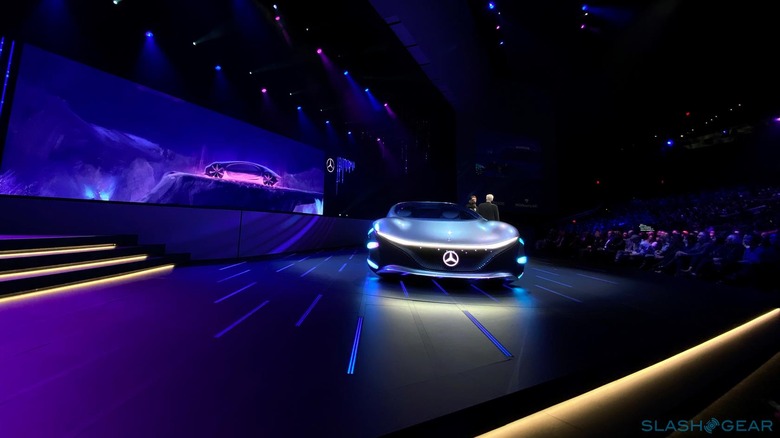
In short, while this VISION AVTR concept may not make it to production, some of the themes Mercedes is using it to explore around a more conscious form of mobility are more than relevant to what's going on in the company's factories, and what's set to arrive in its dealerships over the next two decades. That's a future worth getting excited about.

